Seasonic G-360 and G-550 Power Supply Units Review

So far we have only come across Seasonic power supply units certified according to the highest standards in the upper price segment. However, the new G series units with 80 PLUS Gold certification belong to a much more affordable mainstream range.
Seasonic’s earlier Gold-certified PSU series used to be expensive and high-wattage (except for fanless models) and thus, despite their excellent specs, outside the scope of common users.
The new series, however, includes four PSU models that range in wattage from 360 to 650 watts and are priced very moderately, which makes them interesting not only for computer enthusiasts who own top-end gaming rigs but also for ordinary people who need a high-quality and efficient power source for their computer. The question is if Seasonic has managed to retain its traditional quality in these affordable PSUs.
We’ll check this out by testing two products: the junior 360W model (the only one in the series to have no modular cables) and the mainstream 550W model.
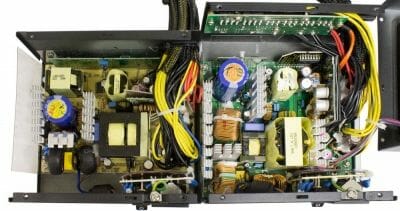
Although from the same series, these models differ more than just in modular design and output power. They are actually built on two different hardware platforms and even differ in size. So, let’s have a look at each one individually.
Testing Methodology
The following article offers a detailed description of our testing methodology and equipment and a brief explanation of what the specified and tested parameters of power supplies mean: X-bit Labs Presents: Power Supply Units Testing Methodology. If you feel overwhelmed with the numbers and terms this review abounds in, refer to the Methodology.
You can also go to our Cases/PSU section to check out reviews of all other PSU models we have tested in our labs.
We will mark the actual power consumption of three system configurations (discussed in our article PC Power Consumption: How Many Watts Do We Need?) in the cross-load diagrams. This will help you see if the tested PSU can meet the requirements of a real-life PC.
Testing Participants
Seasonic SSR-360GP (G-360)
Package and Accessories
The packaging of this PSU was somewhat spoiled by an accident in our test labs, but the product itself survived.
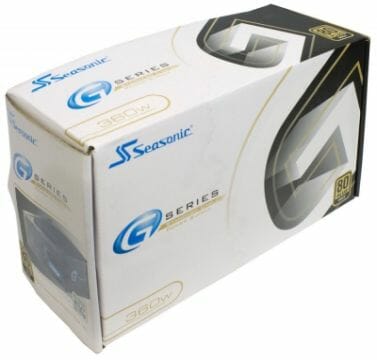
Compared to Seasonic’s top-end PSU series, the packaging looks plain, lacking gold elements or shiny logotypes. You can make out a stylized letter G on the front of the box. That’s the letter Seasonic has decided to use to refer to its newest Gold-certified PSUs.
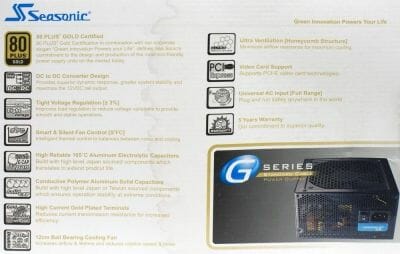
The numerous advantages of the product the manufacturer wants us to be aware of are listed on the back. We’d single out the following: DC-DC converters, tight voltage regulation (the output voltages only vary within 3% of the required levels), and a 5-year warranty. Coupled with the Gold-certified efficiency, that’s quite a lot of advantages for a PSU cheaper than $100 and produced under a leading brand.
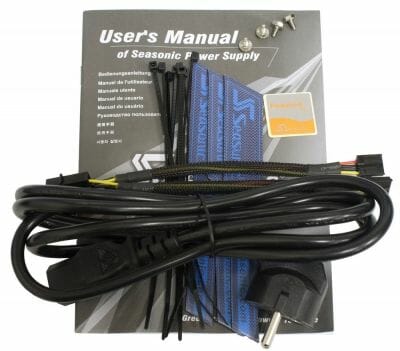
The accessories are the same as included with more advanced Seasonic PSUs except that the user manual is designed and printed in a simpler way.
Exterior Design
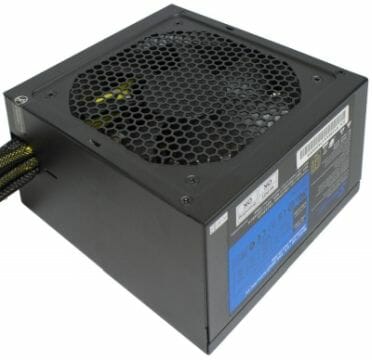
Of course, the affordable series is not decorated as gorgeously as its more expensive counterpart. For example, we can see paper labels here instead of painting. However, we can easily identify the manufacturer by the PSU’s external features. The sunken fan grid with large honeycomb-shaped cells is exactly like the one you can see in Seasonic’s more expensive Gold- and Platinum-certified series, even though this grid covers an ordinary-looking fan rather than a characteristically shaped and individually balanced Sanyo Denki.
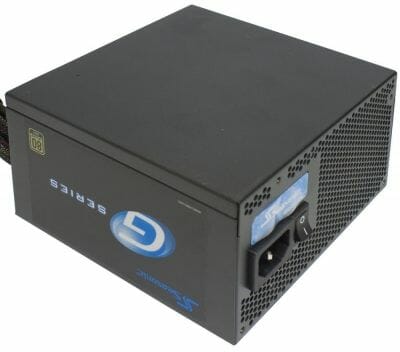
There’s no difference from top-end products on the back except for the color of the sticker with manufacturer logo.
The PSU housing consists of two parts: the bottom panel together with front and back panels and the cover with side panels. The more intricate design of the top-end PSUs is not implemented in this inexpensive product for the sake of lower cost.
Circuit Design
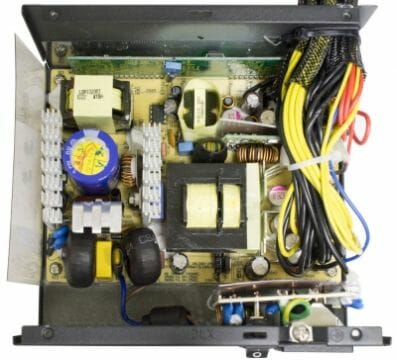
It is a new platform indeed. We haven’t yet seen a PSU with such an interior.
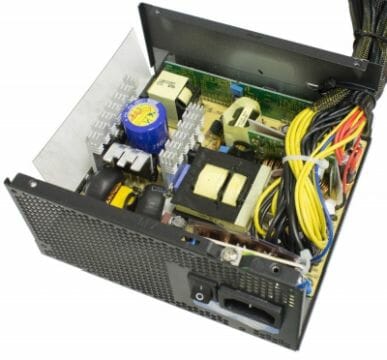
On the other hand, the overall circuit design is quite typical for a modern PSU. The Seasonic SSR-360GP features active power factor correction, uses DC-DC converters to produce +3.3 and +5 volts, and has very small heatsinks.
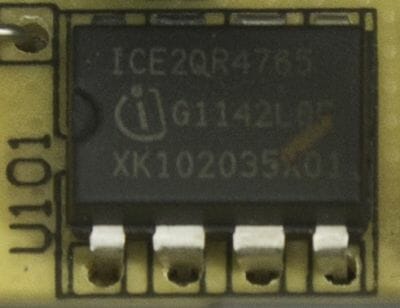
The main PCB only carries a standby source chip Infineon ICE2QR4765. Its PWM/PFC controller and supervisor chips are located on a long daughter card near the front panel of the case.
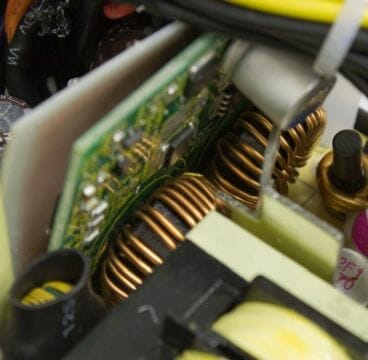
The DC-DC converters reside on another daughter card you can see near the output circuitry and capacitors.

There are United Chemi-Con capacitors at the output.
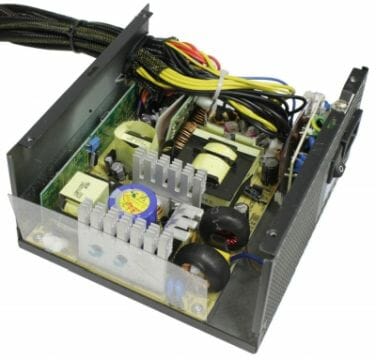
The Seasonic SSR-360GP also uses Rubycon capacitors elsewhere and has a large blue Hitachi AIC, rated for temperatures up to 105°C, at the input. So, the promise of all-Japanese capacitors is true.
Cables and Connectors
The Seasonic SSR-360GP is equipped with the following cables and connectors:
- One mainboard cable with a 24-pin connector (54 cm)
- One CPU cable with a 4+4-pin connector (57 cm)
- One graphics card cable with a 6-pin connector (60 cm)
- One cable with three PATA power connectors (45+12+12 cm)
- One cable with two SATA power connectors (44+15 cm)
- One cable with two SATA power connectors (36+15 cm)
Included with the PSU is a 15cm Y-shaped adapter from one PATA power connector to two floppy-drive plugs.
The number of connectors is impressive for a PSU of such a modest wattage. The 4+4-pin CPU plug is quite a rare thing to see in products of this class, let alone the dedicated graphics card connector.
We can only find fault with the SATA power connectors which may turn out to be too few for some PC configurations. You cannot connect more than two HDDs (if you’ve got an optical drive) unless you use power adapters. Most users won’t notice this problem, but anyway.
The relatively short CPU power cable is hardly a downside since this PSU is likely to be used in a mATX or ATX case where that cable will be long enough to be hidden behind the mainboard.
Specifications
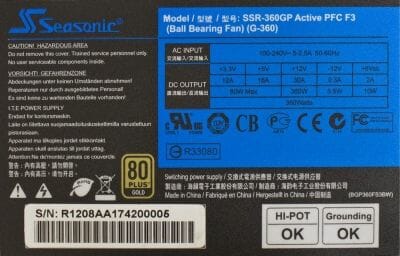
The combined load capacity of the +5V and +3.3V power rails is low at only 80 watts but, considering that even top-end modern PCs hardly consume even 50 watts from them, it’s okay for a 360W PSU. Also following today’s trends, the PSU can deliver its full output power via the +12V rail, which is the most important power source in modern computers.
The standby source is rated for loads up to 2 amperes. That’s not much but enough for this PSU’s wattage rating.
And we can remind you once again that the Seasonic SSR-360GP complies with the 80 PLUS Gold standard.
UPS Compatibility
Working with our APC SmartUPS SC 620, this PSU was stable at loads up to 360 watts when powered by the mains, but could not switch to the UPS’s batteries even at 280 watts.
Cross-Load Voltage Stability
The manufacturer promises that the voltages vary by 3% or less, and that is indeed so.
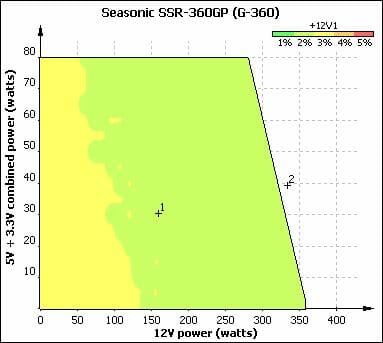
The most important +12V voltage fluctuates by 3% at medium loads and by less than 2% at loads above 130 watts.
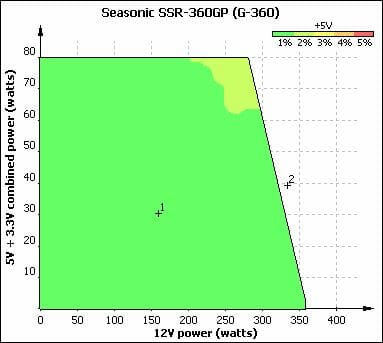
The +5V rail sports exemplary stability. Its voltage is almost always within 1% and only goes beyond that limit when there’s high load on each of the power rails, which is a rather unrealistic scenario.
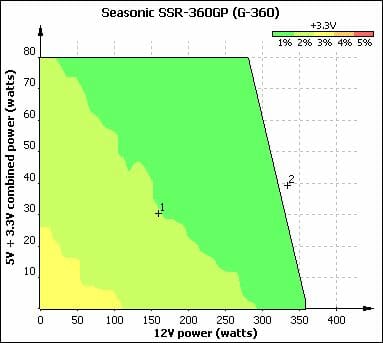
The +3.3V voltage is less than 2% off the required level when there’s low load on each power rail. At higher loads this voltage is even more stable.
Overall, the Seasonic SSR-360GP is very good in this cross-load stability test.
Output Voltage Ripple
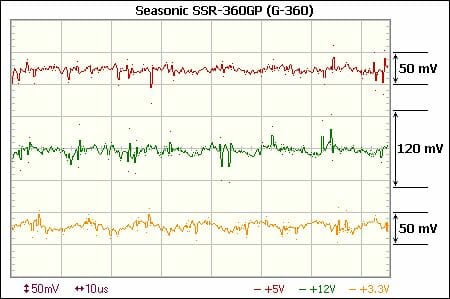
The output voltage ripple is higher than with Seasonic’s more expensive PSUs but fits within the required range by a large margin.
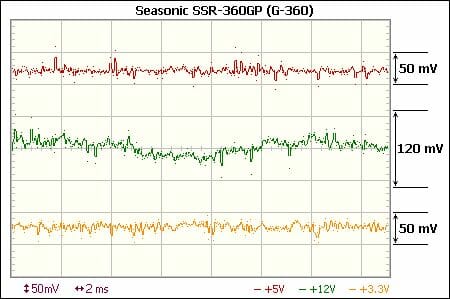
The same goes for the low-frequency ripple: it is just somewhat stronger on the +12V rail but weaker on the +3.3V rail.
Temperature and Noise
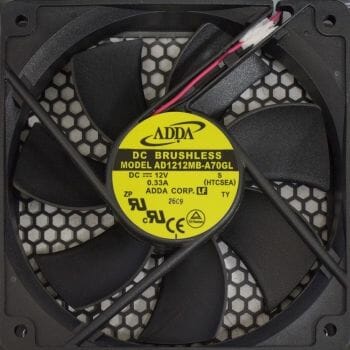
The Seasonic SSR-360GP is cooled by a 120mm fan from ADDA. It is the AD1212MB-A70GL model with a rated speed of 2050 RPM.
Although the fan itself produced no unwanted sounds, the honeycomb mesh Seasonic is so proud of (mentioning it on the product box even) presents a bigger obstacle on the way of the air flow than standard wire grids, making the fan audible at 1100 RPM and higher.
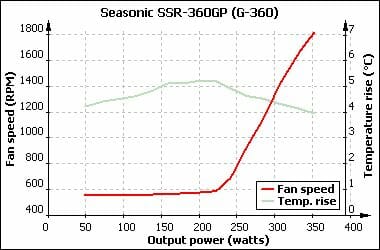
Well, the initial speed of the fan is only 550 RPM. It is maintained until about two thirds of the PSU’s full output power but then the fan accelerates quickly, which is typical of many Seasonic PSUs. The speed actually triples (from 600 to 1800 RPM) over a 100-watt stretch of loads.
Thus, the Seasonic SSR-360GP is virtually silent at loads up to 250 watts but very loud at loads above 300 watts.
Efficiency and Power Factor
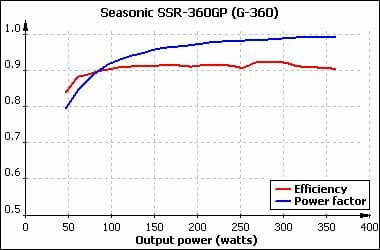
At the reference loads of 20%, 50% and 100%, the Seasonic SSR-360GP is 88.8%, 91.4% and 90.3% efficient, respectively. It reached its peak efficiency of 92.5% at a load of 270 watts.
The power factor is over 99% at high loads, just as promised by the manufacturer.
Standby Source
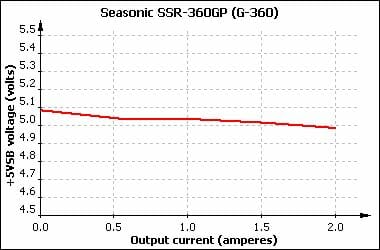
The standby voltage is highly stable over the specified 2-ampere range.
Seasonic SSR-550RM (G-550)
Package and Accessories
The packaging and accessories of this model are the same, so there’s no need to describe them again.
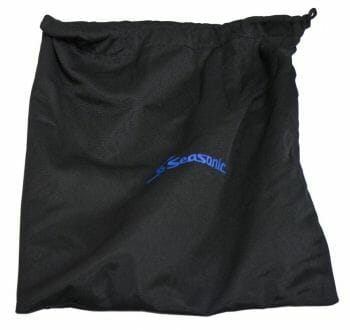
The only addition is related to the 550W model’s semi-modular design: there’s a fabric pouch to store the unused power cables in.
Exterior Design
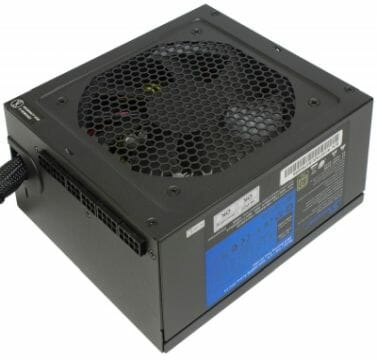
We can spot only one external difference from the junior model: the connectors for modular cables. However, if the two PSUs are put next to each other, the 500W model turns out to be somewhat longer (160 instead of 140 mm).
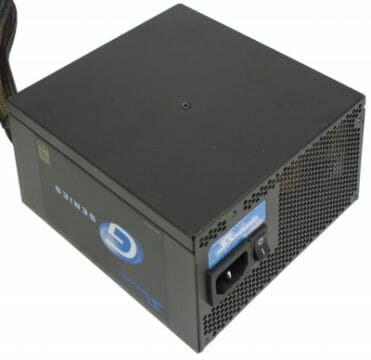
There’s also a screw in the bottom panel the SSR-360GP doesn’t have.
Circuit Design
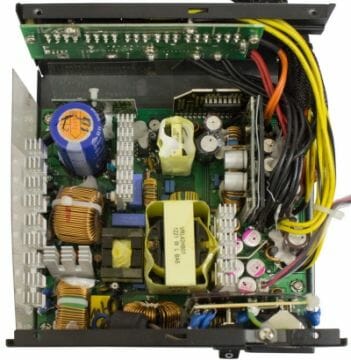
The interior design is overall similar to the junior model’s. The SSR-550RM features active PFC and dedicated voltage regulation based on DC-DC converters.
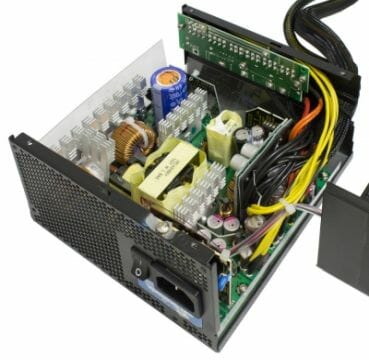
The component layout is different, however, as is the main PCB.
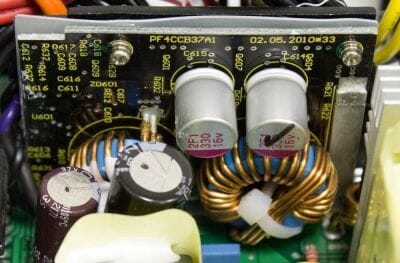
Individual components are different, too, like the DC-DC converter card. It’s no wonder since the power rails work at higher loads in this model.
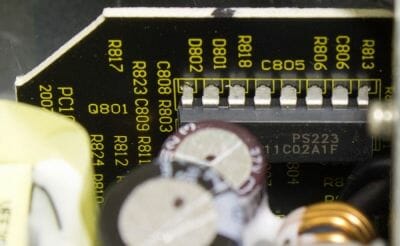
As the PSU’s front panel is now populated by connectors for modular cables, the controller chips have moved to two small daughter cards.
One of them carries a PS223 supervisor. It is employed in numerous PSUs from different brands and price categories.
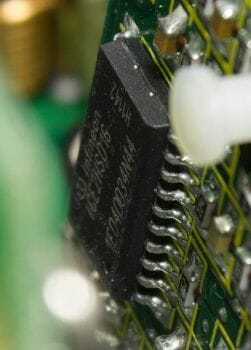
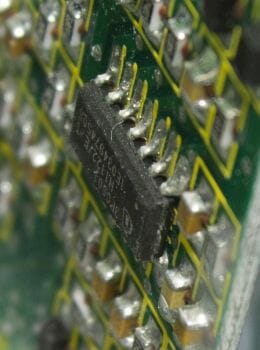
The other daughter card carries a half-bridge LLC converter Infineon ICE2HS01G together with a PFC controller 3PCS01.
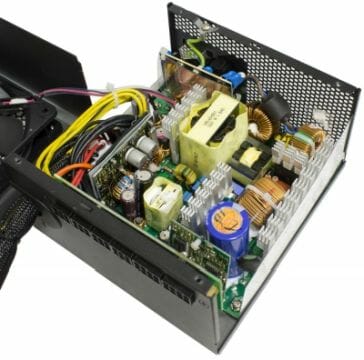
As in the junior model, there’s a Hitachi AIC capacitor at the input and electrolytic capacitors from Rubycon elsewhere.
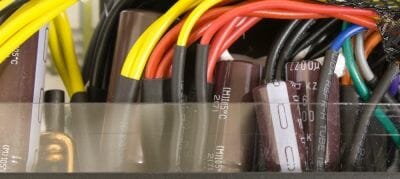
The output capacitors are made by United Chemi-Con.
Cables and Connectors
The SSR-550RM is equipped with the following cables and connectors:
- One mainboard cable with a 24-pin connector (54 cm)
- One CPU cable with a 4+4-pin connector (54 cm)
- Two connectors for graphics card cables
- Four connectors for peripheral power cables
Included with the PSU are:
- Two graphics card cables with one 6+2-pin connector on each (60 cm)
- One cable with three PATA power connectors (40+13+12 cm)
- One cable with two PATA power connectors (31+12 cm)
- One cable with four SATA power connectors (40+12+12+12 cm)
- One cable with two SATA power connectors (30+12 cm)
- One adapter from a PATA power connector to a floppy-drive plug (10 cm)
The selection of connectors is up to the PSU’s wattage but the CPU power cable is too short. It is the same length as in the junior model (the difference in our measurements is allowed for by the manufacturer: both PSUs have a CPU power cable which is 550 mm long with a tolerance of -15/+30 mm), but the SSR-550RM is more likely to be used in a large system case where the 550mm cable won’t be long enough to be hidden behind the mainboard.
Specifications
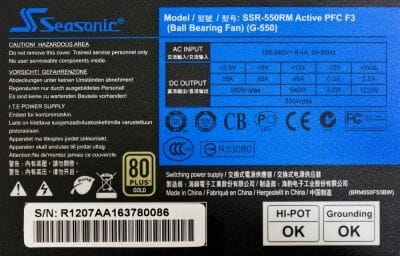
The specs are consistent with those of the junior model and meet today’s requirements. The SSR-550RM can deliver most of its power via the +12V rail while the combined load capacity of the +3.3V and +5V rails is only 100 watts.
The standby source can handle loads up to 2.5 amperes, as is typical of midrange PSUs.
Like the previous model, the SSR-550RM complies with the 80 PLUS Gold standard.
UPS Compatibility
The SSR-550RM showed better compatibility with UPSes than its junior cousin. Working together with our APC SmartUPS SC 620, it was stable at loads up to 382 watts when powered by the mains and could switch to the UPS’s batteries at loads up to 325 watts.
Cross-Load Voltage Stability
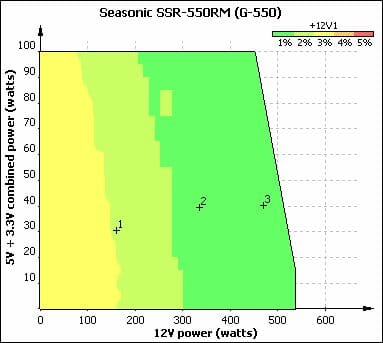
Like with the junior model, the +12V voltage fluctuates by 2% at low loads. It gets more stable than in the Seasonic SSR-360GP at higher loads, staying within 1% of the required level.
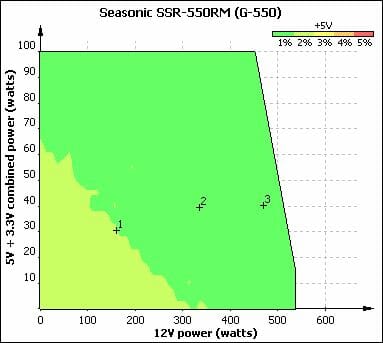
The +5V voltage is within 1% of the required level at most loads. As opposed to the Seasonic SSR-360GP, the 2% zone in the diagram is in the area of low rather than high loads on all of the power rails.
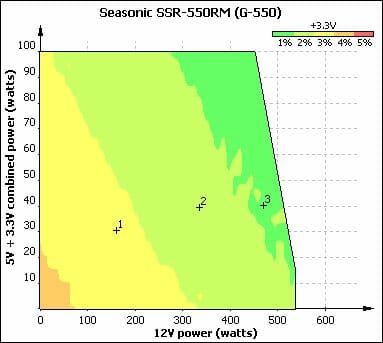
The +3.3V voltage is the least stable of all. When there’s very low load on each power rail, it even goes beyond the promised limit of 3%. It’s no big problem, though.
Overall, we can’t really find any fault with the cross-load stability of the SSR-550RM.
Output Voltage Ripple
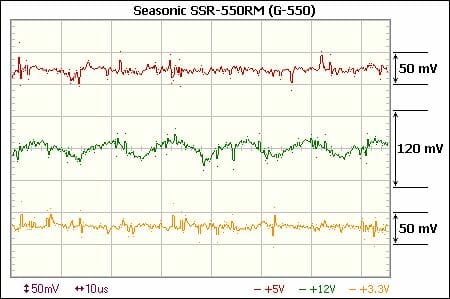
Compared to the junior model, the high-frequency voltage ripple is stronger on the +12V rail but somewhat weaker on the other rails.
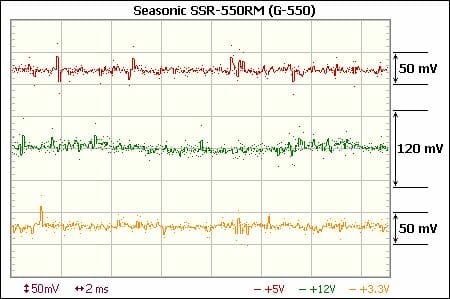
There’s almost no voltage ripple on the +12V rail at the double mains frequency, though.
Thus, the output voltage ripple of the SSR-550RM is higher than with Seasonic’s more advanced PSUs but meets the requirements of the industry standard.
Temperature and Noise
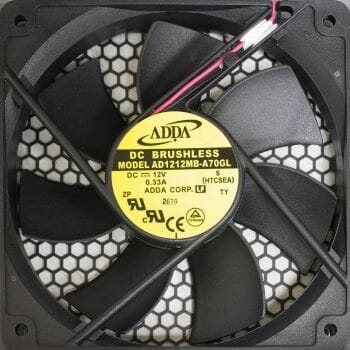
The SSR-550RM is cooled by a 2050RPM ADDA AD1212MB-A70GL fan.
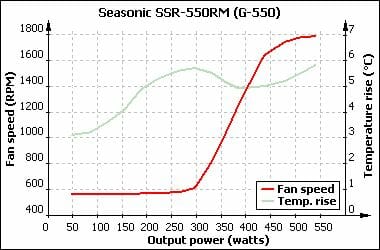
The fan is regulated like in the previous model except that it accelerates later and smoother. It is only at 350 watts that the fan reaches 1000 RPM and becomes uncomfortable. In the SSR-360GP, the fan speed is as high as 1800 RPM at such a load.
Well, the SSR-550RM eventually makes its fan work at 1800 RPM, too, but only at loads of 500 watts and higher.
Thus, the SSR-550RM is better than the SSR-360GP in terms of acoustic comfort. It is silent at loads up to 300 watts, very quiet at up to 350 watts and only becomes uncomfortable at loads above 400 watts.
Efficiency and Power Factor
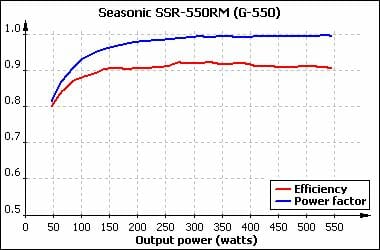
The SSR-550RM was 88.5%, 92.3% and 90.8% efficient at loads of 20%, 50% and 100%, respectively. The peak efficiency of 92.4% was observed at a load of 309 watts.
The power factor is above 99% at 50% load, reaching a maximum of 99.8%.
Standby Source
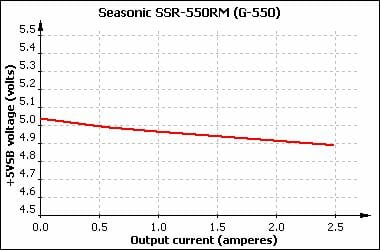
The standby source copes with its job without any problem.
Conclusion
The junior model of Seasonic’s new Gold-certified PSUs, SSR-360GP, doesn’t seem to have any alternatives if you need a high-efficiency ATX power supply with a wattage rating of below 400 watts. We can’t recall any other Gold-certified PSU with similar specs whereas fan-less models of that wattage cost almost twice as much. That said, the 360W PSU is going to be sufficient for a rather advanced PC configuration with a top-end CPU, a rather fast graphics card and a few HDDs.
The higher-wattage models of the series are priced comparably with Cooler Master’s Silent Pro Gold PSUs of similar wattage, which are based on an Enhance platform. The Seasonic PSUs are louder at high loads but quieter at low and medium ones. They are also better in terms of output voltage ripple.
Compared to other Gold-certified products, the Seasonic G series is only a little more expensive than the FSP Aurum (and Aurum-based PSUs of other brands, like Thermaltake’s Toughpower GOLD). However, the FSP Aurum is inferior across a number of parameters such as output voltage ripple, acoustic comfort (at any load) and voltage stability.
Thus, Seasonic has come up with a very good series of affordable Gold-certified PSUs. With their price/specs combination, they have only one competitor, Cooler Master’s Silent Pro Gold. However, the two series overlap but partially (the Silent Pro Gold begins at 550 watts whereas the Seasonic G series ends at 650 watts), so the Seasonic G series has no real alternative at the lower wattages.
Highs:
- Comparable to their more advanced X series counterparts in voltage stability and efficiency
- Low output voltage ripple
- Very quiet at low and medium loads
- Good selection of cables and connectors
- Adequate load capacity of each power rail
- Low price (for an 80 PLUS Gold product)
Lows:
- Noisy fan at high loads
- Rather short CPU power cable